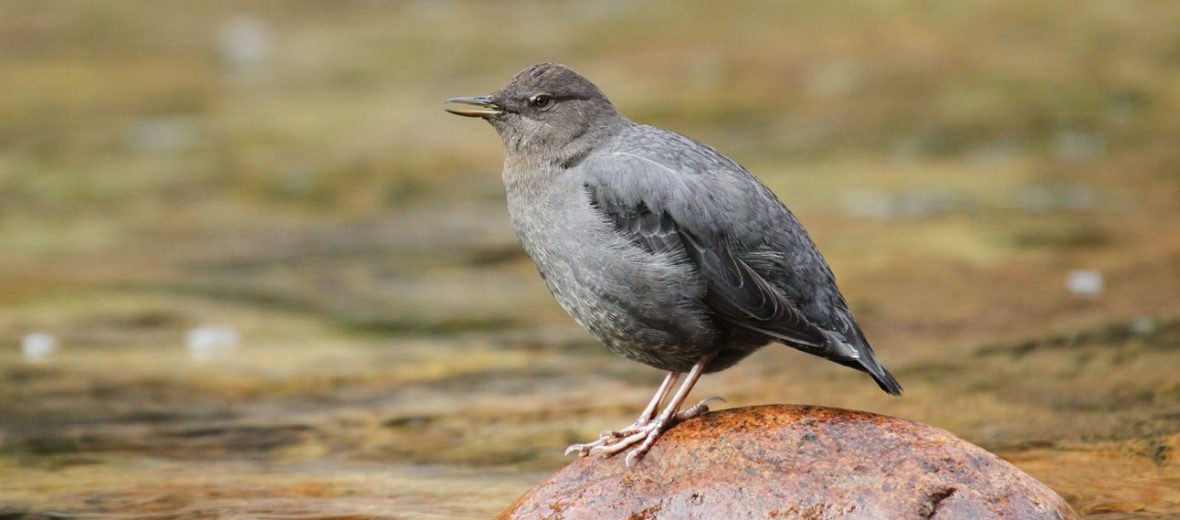
The American dipper, aka water ouzel, can be found from Alaska, through western Canada, western United States, Mexico, and into Central America. They can tolerate Arctic to tropical environments. Since these birds are widespread and have a wild population of approximately 160,000 individuals, these birds are listed as Least Concern by the IUCN. Their populations are decreasing though due, in part, to pollution and habitat destruction.
First the Stats…
Scientific name: Cinclus mexicanus
Weight: Up to 1.8 ounces
Length: Up to 7 inches
Wingspan: Up to 9 inches
Lifespan: Up to 7 years
Now on to the Facts!
1.) These birds are nonmigratory and only change locales to move from frozen areas to areas with running, drinkable water.
2.) American dippers are an indicator species in that their presence indicates good water quality.
3.) They are territorial and defend a given area against perceived threats.
4.) Dippers prey on small crayfish, dragonfly nymphs, caddisfly larvae, small fish, and tadpoles.
5.) Their primary predators are hawks and larger trout species (since these birds like to dive for prey).
But wait, there’s more on the American dipper!
6.) They build their nest close to water, near river banks, on rock ledges, behind waterfalls, or under bridges.
7.) Females lay up to 4 eggs that hatch in up to 17 days.
Did you know…?
These birds seem to almost fly while under water. They are a true aquatic songbird.
8.) Chicks fledge in up to 25 days.
9.) Both parents assist in rearing and feeding their young.
10.) Their songs sound like trills or high whistles and make a “peee peee, pijur pijur” repeated over and over.
Now a Short American Dipper Video!
Be sure to share & comment below! Also, check out the Critter Science YouTube channel. Videos added regularly!
Want to suggest a critter for me to write about? Let me know here.



